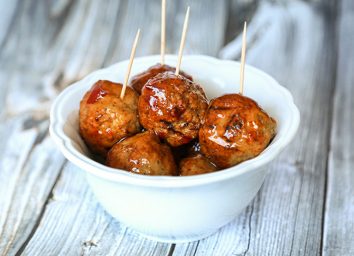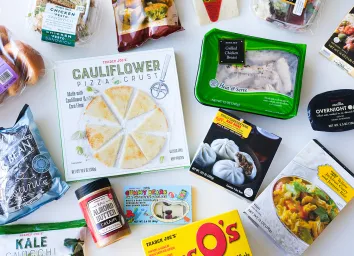Trader Joe’s Is Now Selling Pink Lemons—And They’re Completely Natural

Trader Joe’s is known for its staple food items, with the company’s scrumptious cauliflower gnocchi likely at the forefront. And now, a new release has caught everyone’s attention: Pink lemons.
Yep, TJ’s is currently selling beautiful pink lemons that are naturally pink for only $1.69 for a pack of three. Reliable Instagram account @traderjoesobsessed broke the news just a few days ago, capturing an image of the cute little fruit in a Trader Joe’s located in Montrose, California.
The question is: How do lemons become naturally pink?
Well, according to Nature Hills, America’s largest online plant nursery, the Legally Blonde-esque lemon comes from the Variegated Pink Lemon tree. The fruit has variegated yellow and green stripes on its skin and vibrant pink flesh. The tree grows in a few random parts of the U.S., but it appears to flourish in three regions specifically: California, southeast Texas, and Florida.
Pink lemons have an innate tangy, floral flavor. The science behind why the flesh is naturally pink has to do with the fruit’s higher concentration of lycopene. Lycopene is what’s known as a carotenoid, which is a nutrient found in plants that has antioxidant properties. Aside from pink lemons, lycopene naturally occurs in grapefruit, watermelon, and even tomatoes. The common denominator among all three? The color! Lycopene is responsible for the pigment in all of these fruits—pink lemons included.
And, no, pink lemons did not obtain their pigment in the same manner that pink pineapples did. (You may recall pink pineapples being “a thing” just a few years ago. The rosé-fleshed pineapples were genetically modified so that there would be less of the enzymes in pineapple that convert lycopene to beta carotene. Essentially, it was all for show.)
There are a few fruits, however, with naturally pink flesh that you may not even know about. Dragon fruit, for example, typically has a pink shell and white flesh with black seeds sporadically embedded throughout its interior. But, red dragon fruit, aka Pitaya, has a beautiful magenta pulp in addition to a pink shell. Native to Costa Rica, the eye-catching dragon fruit is not as common in the U.S., but it’s ultra-rich in lycopene and vitamin C and B-complex vitamins.
Guava is another pink-fleshed fruit that contains the pigment. In fact, guava contains the most lycopene of most pink and red fruits and vegetables. Pretty cool, huh?
If the science behind pink lemons has piqued your interest, consider diving into 100 Mind-Blowing Food Facts for more tasty revelations.








